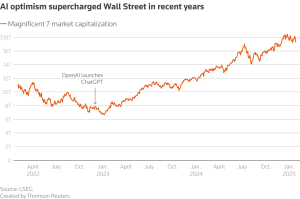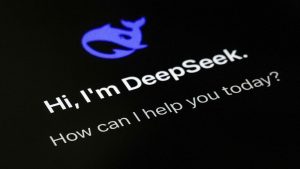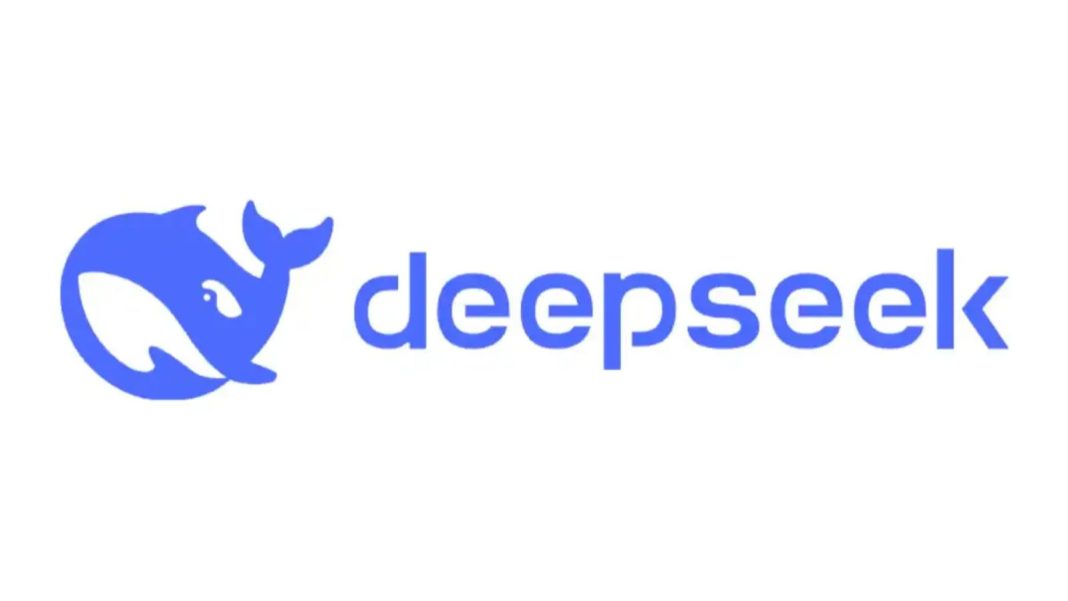What is so revolutionary about China’s new artificial intelligence model and what does its appearance imply for the direction of AI going forward
Everyone is wondering if a new arrival might upset the hitherto order in the AI industry as China’s DeepSeek artificial intelligence model grabs attention for claiming to deliver performance equivalent to OpenAI, Google, and Meta but at a fraction of the price. This unexpected development has sent tremors through the industry, triggering a reassessment of AI investments and causing significant volatility in the stock market. What makes DeepSeek so disruptive, and what does its emergence mean for the future of AI?
A Freefalling Market:
DeepSeek&’s appearance caused the financial industry to react quickly, driving the total value of AI firms down by more than $2.5 billion in 24 hours. This fall corresponds with DeepSeek’s emergence and affects many aspects of the industry for artificial intelligence. Leading artificial intelligence agents including GRIFFAIN, Virtuals AI agent creation platform, AIXBT, and ai16z framework all have seen big declines, ranging from 14% to 25%.

Even the cryptocurrency sector is feeling the effects, with tokens including Near Protocol, Internet Computer, Render, and Artificial Superintelligence Alliance all undergoing losses as well as AI meme coins like Fartcoin.US shares erased more than $1 trillion in market capital on Monday, and the stock market has been especially unstable. Among the most severely affected are chipmakers, which are vital for the foundation of AI.
Leading this industry, Nvidia watched its shares plummet 16.9 percent, erasing $589 billion from its market capitalization. This is a clear example of the disruptive power of DeepSeek; it is the most significant one-day market capital loss in history. Other significant chipmakers have also seen major drops; for example, both Taiwan Semiconductor Manufacturing Company and Broadcom have seen a 17 percent fall in their stock value. Still another significant player in the chip manufacturing sector, ASML has seen their stock fall 6 percent.
European tech stocks as well under distress; the influence reaches beyond the US. The STOXX 600 index for all of Europe fell 3.4 percent and chip equipment manufacturer ASML dropped 7 percent. This worldwide response clearly shows the general worry about DeepSeek&’s possibility of upsetting the status quo in the artificial intelligence field. This pervasive market response highlights the uncertainty and anxiety over the arrival of DeepSeek. Investors clearly worry about the possible consequences for present players and the direction future artificial intelligence investments will take.
DeepSeek’s Possible Long-term Consequences:
Let us first look at the possible long-term effects of DeepSeek’s penetration before we analyze the causes of the market’s response. Several important situations are developing.The open-source method and cost-effectiveness of DeepSeek might reduce the obstacles to letting AI advancement happen, therefore encouraging creativity and competition. This could lead to a more diverse and dynamic AI environment where fresh players arise and challenge established giants.
We could witness an explosion in AI use among many sectors as it becomes increasingly inexpensive. Such a direction would result in more automation of tasks, better solutions to difficult issues, and raised efficiency. This possibility goes further than the technology field, giving non-technology firms chances to use AI for growth and more efficiency.
Investors probably will turn their attention from artificial intelligence infrastructure to artificial intelligence products and services. This could give rise to more funding for businesses and startups working on creative AI technologies. The success of DeepSeek might cause competition in the artificial intelligence sector to grow, driving more invention and possibly resulting in price wars. Consumers and businesses both could benefit from more affordable and readily available artificial intelligence solutions.

DeepSeek&’s efficiency has the potential to disrupt the US power market by reducing energy consumption for AI applications. This could cause a reevaluation of long-term electricity demand forecasts as well as the viability of existing data center expansion rates. The rise of DeepSeek also emphasizes the increasing rivalry in the AI field between the United States and China. Rising investment in AI study and development on both parts could also generate trade tension and limitations.
These possible long-term consequences underline the revolutionary possibilities of DeepSeek’s coming. It’s not only about a fresh AI model; it’s about a possible paradigm change in how artificial intelligence is created, accessed, and used in multiple industries.
The Changed Dynamics Of The AI Sector:
The development of DeepSeek has fundamentally changed the nature of the artificial intelligence industry. The development of useful AI programs, not infrastructure spending, is now under close review. As artificial intelligence models become more cost-effective, the focus is on what can be created with artificial intelligence rather than on how much computing power can be aggregated.
This transition is happening amid a more general backdrop of fast change in the artificial intelligence business. For instance, the adaptive AI sector is projected to develop at a CAGR of 44.71 percent over 2024-2029. The rising need of artificial intelligence systems with better features and fast performance in many sectors underlie this growth.
DeepSeek&’s arrival might accelerate this trend toward use by magnifying the "Jevons Paradox " in the artificial intelligence sector. Named after economist William Jevons, this paradox implies that better efficiency in technology usually leads to more general usage instead of lower consumption. In the artificial intelligence environment, inexpensive and more efficient models such DeepSeek&’s could lead to broad acceptance, hence driving long-term need for AI infrastructure and programs.
What the market is craze:
DeepSeek’s amazing cost-effectiveness lies in the middle of the response of the market. At just 14 cents per million input tokens, DeepSeek is much cheaper than OpenAI’s GPT-4, which runs at $15 per million input tokens. This striking contrast has compelled investors to rethink the financial models of proven artificial intelligence businesses, therefore worrying about their capacity to excel in a scene where efficiency is paramount.
DeepSeek’s success rises from its use of open-source software as well as creative training methods. DeepSeek uses free tools and enables a larger set of users to change and access their software contrary to proprietary models created by companies like OpenAI, Google, and Meta. By encouraging cooperation, knowledge sharing, and a more distributed development environment, this open-source model has the capacity to revamp the artificial intelligence network.

DeepSeek has also shown that using less resources it can deliver comparable performance, therefore disputing the premise that enormous infrastructure investment is necessary for artificial intelligence supremacy. Skipping supervised fine-tuning in favor of raw reinforcement learning and utilizing “Aha moments” as pivot tokens are among the creative methods used to achieve this. Furthermore using “inference-time computing,” DeepSeek saves computational power by running only the most pertinent parts of its model for every query.
Taken together, these considerations have allowed DeepSeek to create sophisticated AI without great hardware investment, causing investors to ask the worth of AI infrastructure and hardware. This has raised questions on the future viability of businesses such as Nvidia, which have significantly poured into specialized data centers and AI chips.
Concerns and difficulties:
Though the rise of DeepSeek offers great potential, it also brings significant issues to light.DeepSeek’s techniques of data gathering have worriedness about user privacy. Located on Chinese servers, the business stores users’ data—birth date, keystrokes, text or audio inputs, uploaded files, chat history, and others—along with other data. This begs issues regarding the security and possible misuse of this information, especially in view of the various data privacy laws in China versus other nations.
Like every AI model, DeepSeek is subject to inaccuracy and bias. This is especially worrying since the model’s open-source nature enables it to be changed and possibly controlled. While errors in artificial intelligence systems can damage trust in AI technology, bias can cause unfair results.
Particularly as artificial intelligence becomes more available and powerful in many areas of our life, these issues underscore the need for strong governance and ethical guidelines to steer its creation and use.


